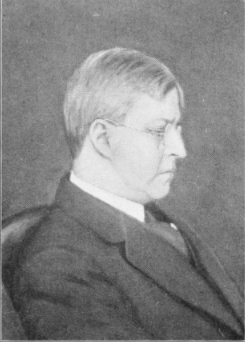Kastle–Meyer test
A presumptive blood test used in forensic science
Kastle–Meyer test
The Kastle–Meyer test is a presumptive test used in forensic science to detect the possible presence of blood. It is based on the peroxidase-like activity of hemoglobin in blood, which catalyzes the oxidation of phenolphthalin to phenolphthalein, resulting in a pink color change.
History
The test was developed in 1901 by Joseph H. Kastle and S. R. Meyer. Joseph Kastle was a prominent chemist known for his work in biochemistry and toxicology. The Kastle–Meyer test was one of the first forensic tests to be widely used for the detection of blood at crime scenes.
Principle
The Kastle–Meyer test relies on the catalytic properties of hemoglobin, which acts similarly to peroxidase enzymes. When a sample suspected of containing blood is treated with the Kastle–Meyer reagent, which contains phenolphthalin, and then exposed to hydrogen peroxide, the hemoglobin catalyzes the oxidation of phenolphthalin to phenolphthalein. This reaction produces a bright pink color, indicating the presence of blood.
Procedure
The procedure for the Kastle–Meyer test is as follows:
1. A small sample of the suspected stain is collected using a swab or filter paper. 2. A drop of the Kastle–Meyer reagent is applied to the sample. 3. A drop of hydrogen peroxide is added to the sample. 4. Observation for a color change to pink, which indicates a positive result for the presence of blood.
Limitations
While the Kastle–Meyer test is highly sensitive and can detect blood at very low concentrations, it is not specific to human blood. Other substances, such as certain vegetable materials and animal blood, can also produce a positive result. Therefore, the test is considered presumptive and must be followed by more specific tests, such as DNA analysis, to confirm the presence of human blood.
Applications
The Kastle–Meyer test is widely used in crime scene investigations to quickly screen for the presence of blood. It is valued for its simplicity, rapid results, and the minimal amount of sample required. The test is often used in conjunction with other forensic techniques to build a comprehensive understanding of the evidence.
Related pages
Transform your life with W8MD's budget GLP-1 injections from $125.
W8MD offers a medical weight loss program to lose weight in Philadelphia. Our physician-supervised medical weight loss provides:
- Most insurances accepted or discounted self-pay rates. We will obtain insurance prior authorizations if needed.
- Generic GLP1 weight loss injections from $125 for the starting dose.
- Also offer prescription weight loss medications including Phentermine, Qsymia, Diethylpropion, Contrave etc.
NYC weight loss doctor appointments
Start your NYC weight loss journey today at our NYC medical weight loss and Philadelphia medical weight loss clinics.
- Call 718-946-5500 to lose weight in NYC or for medical weight loss in Philadelphia 215-676-2334.
- Tags:NYC medical weight loss, Philadelphia lose weight Zepbound NYC, Budget GLP1 weight loss injections, Wegovy Philadelphia, Wegovy NYC, Philadelphia medical weight loss, Brookly weight loss and Wegovy NYC
|
WikiMD's Wellness Encyclopedia |
| Let Food Be Thy Medicine Medicine Thy Food - Hippocrates |
Medical Disclaimer: WikiMD is not a substitute for professional medical advice. The information on WikiMD is provided as an information resource only, may be incorrect, outdated or misleading, and is not to be used or relied on for any diagnostic or treatment purposes. Please consult your health care provider before making any healthcare decisions or for guidance about a specific medical condition. WikiMD expressly disclaims responsibility, and shall have no liability, for any damages, loss, injury, or liability whatsoever suffered as a result of your reliance on the information contained in this site. By visiting this site you agree to the foregoing terms and conditions, which may from time to time be changed or supplemented by WikiMD. If you do not agree to the foregoing terms and conditions, you should not enter or use this site. See full disclaimer.
Credits:Most images are courtesy of Wikimedia commons, and templates, categories Wikipedia, licensed under CC BY SA or similar.
Translate this page: - East Asian
中文,
日本,
한국어,
South Asian
हिन्दी,
தமிழ்,
తెలుగు,
Urdu,
ಕನ್ನಡ,
Southeast Asian
Indonesian,
Vietnamese,
Thai,
မြန်မာဘာသာ,
বাংলা
European
español,
Deutsch,
français,
Greek,
português do Brasil,
polski,
română,
русский,
Nederlands,
norsk,
svenska,
suomi,
Italian
Middle Eastern & African
عربى,
Turkish,
Persian,
Hebrew,
Afrikaans,
isiZulu,
Kiswahili,
Other
Bulgarian,
Hungarian,
Czech,
Swedish,
മലയാളം,
मराठी,
ਪੰਜਾਬੀ,
ગુજરાતી,
Portuguese,
Ukrainian
Contributors: Prab R. Tumpati, MD

